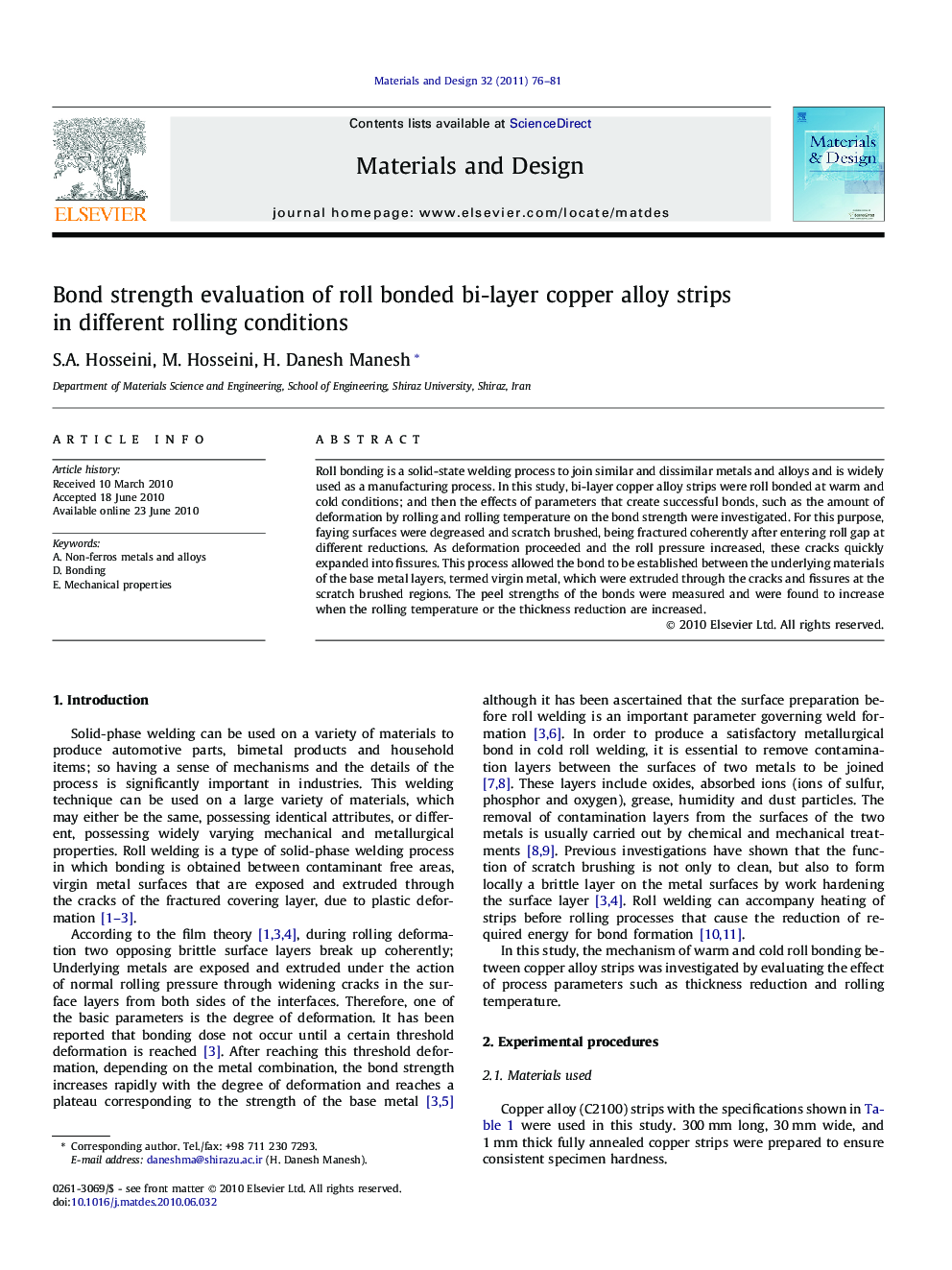| Article ID | Journal | Published Year | Pages | File Type |
|---|---|---|---|---|
| 831697 | Materials & Design (1980-2015) | 2011 | 6 Pages |
Roll bonding is a solid-state welding process to join similar and dissimilar metals and alloys and is widely used as a manufacturing process. In this study, bi-layer copper alloy strips were roll bonded at warm and cold conditions; and then the effects of parameters that create successful bonds, such as the amount of deformation by rolling and rolling temperature on the bond strength were investigated. For this purpose, faying surfaces were degreased and scratch brushed, being fractured coherently after entering roll gap at different reductions. As deformation proceeded and the roll pressure increased, these cracks quickly expanded into fissures. This process allowed the bond to be established between the underlying materials of the base metal layers, termed virgin metal, which were extruded through the cracks and fissures at the scratch brushed regions. The peel strengths of the bonds were measured and were found to increase when the rolling temperature or the thickness reduction are increased.
